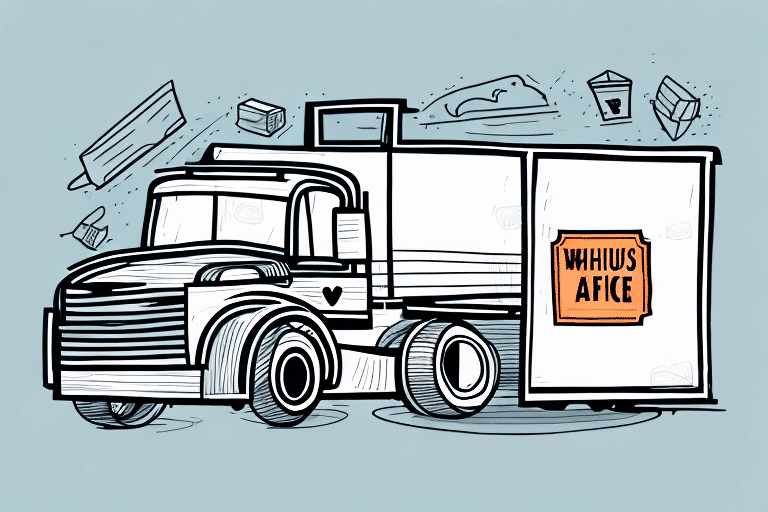Why Proper Packing is Crucial for Shipping
Packing and shipping are essential aspects of many businesses, yet misconceptions often surround these processes. Contrary to the belief that packaging is merely a formality, proper packaging is pivotal for ensuring that products reach their destination intact and undamaged. Utilizing sturdy and robust materials is crucial to protect products from pressure, impact, and temperature changes during transit.
Effective packaging not only safeguards products but also significantly influences customer satisfaction. Damaged products can lead to negative reviews, returns, and a tarnished reputation. Investing in quality packaging helps maintain a company's reputation and ensures customer satisfaction.
Common Packaging Mistakes to Avoid
A prevalent misconception is that a one-size-fits-all approach works for packaging. Many businesses fail to consider the unique nature and requirements of their products, leading to mistakes such as incorrect box sizes, inadequate protection, or improper cushioning. Additionally, overlooking the need to keep packages dry can result in product damage, especially in rainy or humid conditions.
To ensure products are delivered in perfect condition, businesses should avoid these common packaging errors by tailoring their packaging solutions to the specific needs of their products.
The Impact of Shipping Materials on the Environment
Another widespread misconception is that packaging is solely for protection, neglecting its environmental impact. Choosing sustainable packaging materials is vital for minimizing environmental harm. Recyclable, biodegradable, and reusable packaging options reduce the ecological footprint and can also lead to cost savings over time due to their durability and reusability.
Moreover, the transportation of goods contributes significantly to carbon emissions. Businesses can mitigate their environmental impact by selecting local suppliers, utilizing efficient transportation methods such as electric or hybrid vehicles, and implementing carbon offset programs.
How to Choose the Right Shipping Carrier for Your Needs
Choosing the right shipping carrier goes beyond comparing prices. Each carrier has its strengths and weaknesses, making some better suited for specific products and delivery destinations. Factors to consider include speed, reliability, coverage area, security features, and environmental practices.
Additionally, the level of customer service provided by the carrier is crucial. Responsive and helpful support can resolve issues that may arise during the shipping process. Businesses prioritizing sustainability should also consider carriers that align with their environmental values, such as those utilizing electric vehicles or implementing recycling programs.
Understanding Different Shipping Options and Their Costs
Businesses must understand the various shipping options available and their associated costs. While expedited shipping may seem like the only way to ensure timely delivery, factors such as shipment distance and delivery urgency should guide the choice of shipping method.
The type of product being shipped also plays a role in determining the appropriate shipping option. Fragile or perishable items may necessitate special handling and packaging, which can increase shipping costs. Additionally, opting for sustainable shipping practices, such as carbon-neutral shipping or eco-friendly packaging materials, can reduce environmental impact and appeal to eco-conscious customers.
Debunking the Myth of One-Size-Fits-All Packaging
The belief that a single packaging solution fits all products is a misconception. Packaging should be customized to meet the specific requirements of each product. For example, some products may require airtight seals to maintain freshness, while others may need extra cushioning to protect against impacts.
Collaborating with packaging experts to develop tailored solutions ensures that products are adequately protected during transit. Additionally, using sustainable materials and minimizing waste enhances environmental responsibility and improves brand image among eco-conscious consumers.
Tips for Safely Shipping Fragile Items
Shipping fragile items requires more than just adding a layer of bubble wrap. Proper packaging techniques are essential to ensure these items reach their destination intact. Using hard-sided boxes offers greater protection compared to soft-sided packaging. Incorporating additional cushioning materials like foam or air pillows provides an extra layer of defense against impacts.
Clearly labeling packages as "fragile" or "handle with care" is crucial to ensure that shipping carriers take the necessary precautions during handling. Additionally, partnering with reliable and experienced shipping companies that specialize in fragile items can further guarantee safe delivery.
The Importance of Labeling Packages Accurately
Accurate labeling is vital for ensuring packages are delivered to the correct destination. Incorrect labels can lead to delays, lost packages, or misdelivery. Businesses must ensure that all address details, including names and contact information, are accurate and up-to-date. Including a return address and labeling packages as fragile can further reduce the risk of mishandling during transit.
Shipping Insurance: Is It Worth the Investment?
Shipping insurance is often viewed as an unnecessary expense, but it provides significant benefits. Insurance offers peace of mind, knowing that products are covered in case of loss or damage during transit. This protection helps safeguard a business's reputation by ensuring that customer needs are met even when unforeseen issues arise.
Businesses should evaluate the potential costs associated with damaged or lost shipments against the cost of insurance. In most cases, investing in shipping insurance is a worthwhile decision that can prevent financial losses and maintain customer trust.
How to Save Money on Packing and Shipping Costs
Contrary to the misconception that packing and shipping must be expensive, businesses can reduce costs without compromising quality by following simple strategies. Employing the right packaging size eliminates excess material use and reduces shipping costs. Selecting shipping carriers based on specific product needs and negotiating rates can also lead to significant savings.
Reducing package weight and investing in efficient shipping software can streamline the shipping process and further cut costs. Utilizing reputable shipping software solutions, such as those offered by [ShipBob](https://www.shipbob.com/) or [ShipStation](https://www.shipstation.com/), can help automate shipping tasks, generate labels, track packages, and manage shipments more efficiently.
The Impact of Weather on Packages During Transit
Weather conditions can significantly affect packages during transit. Extreme temperatures, moisture, and other environmental factors can compromise the quality of products, especially perishable goods. Businesses must ensure that products are appropriately packed to withstand various weather conditions.
Additionally, informing shipping carriers about products that require specific temperature controls is essential. This ensures that carriers can provide the necessary environment to protect the products throughout the shipping process.
Global Shipping: Understanding Customs Regulations
When shipping products internationally, businesses must be aware of and comply with the customs regulations of the destination country. Each country has its own set of rules and requirements, and failure to adhere to these can result in delays, additional fees, or refusal of entry for the shipped products.
Understanding the additional costs and documentation involved in international shipping is crucial. Proper preparation and knowledge of customs procedures can simplify the shipping process and prevent complications.
Using Technology to Streamline Your Packing and Shipping Process
Technology plays a significant role in simplifying and enhancing the packing and shipping process. Utilizing shipping software can automate various tasks, streamline packaging, and increase shipping efficiency. By integrating with e-commerce platforms and shipping carriers, businesses can effortlessly generate shipping labels, track packages, and manage shipments.
Solutions like [ShipBob](https://www.shipbob.com/) and [ShipStation](https://www.shipstation.com/) offer comprehensive features that help businesses optimize their shipping operations, reduce errors, and save time.
Best Practices for E-commerce Shipping
E-commerce shipping presents unique challenges, such as handling returns and managing customer expectations. To ensure customers receive their products in good condition, businesses should adopt best practices tailored to online sales.
Transparency regarding shipping times, costs, and return policies is essential for building trust with customers. Providing detailed tracking information allows customers to monitor their packages and plan accordingly, enhancing the overall shopping experience.
By debunking these misconceptions surrounding packing and shipping, businesses can establish a seamless shipping process that meets their specific needs while protecting their products, reputation, and bottom line.








